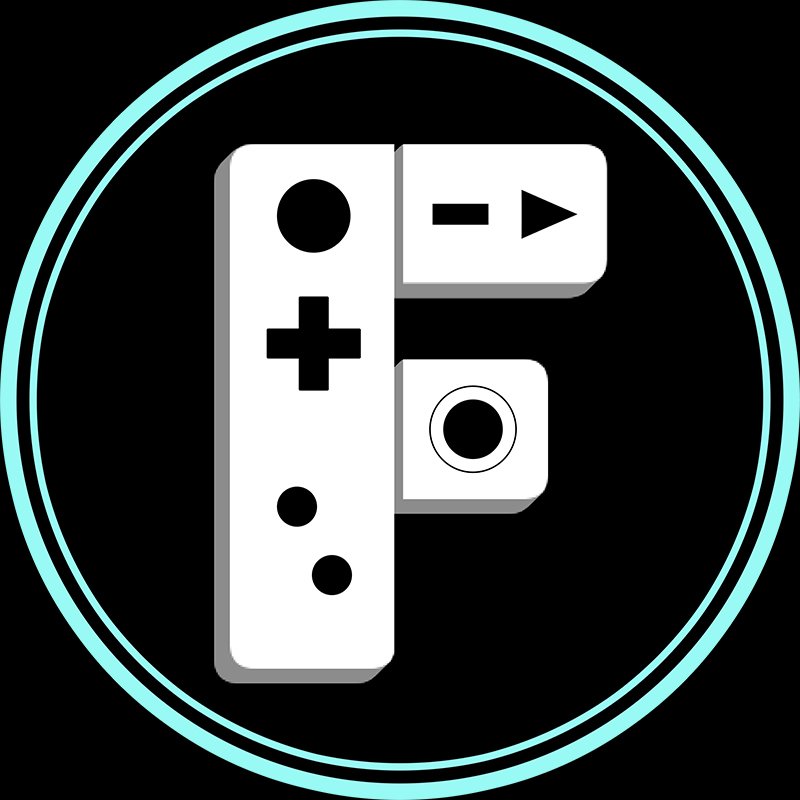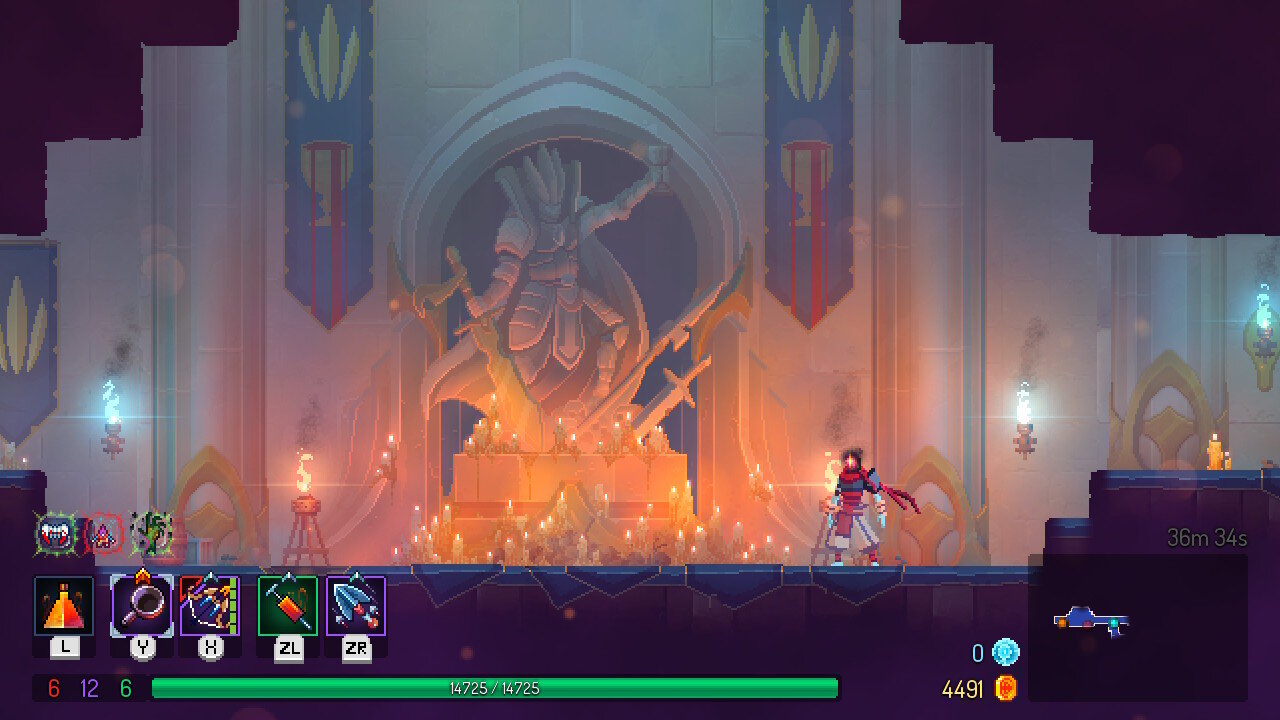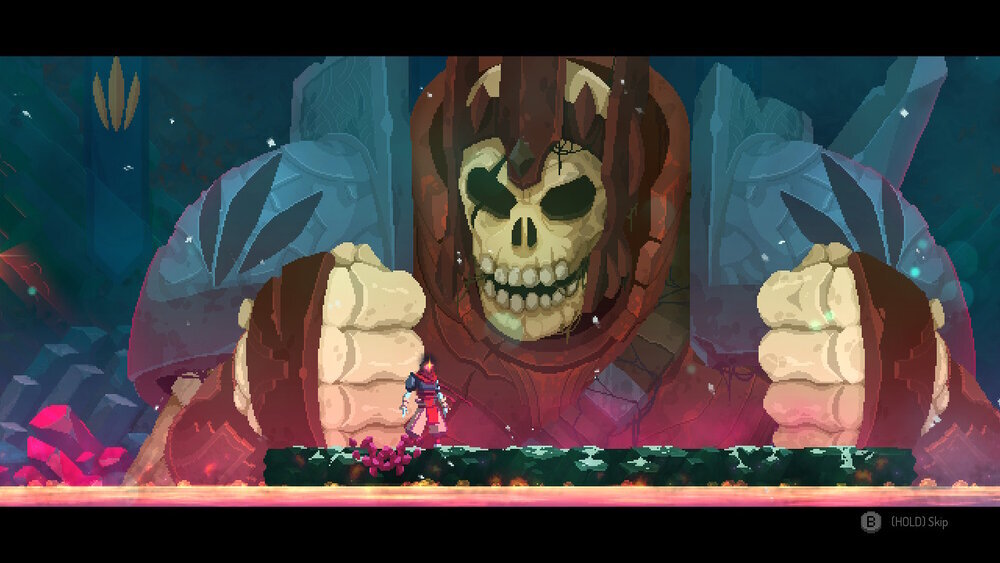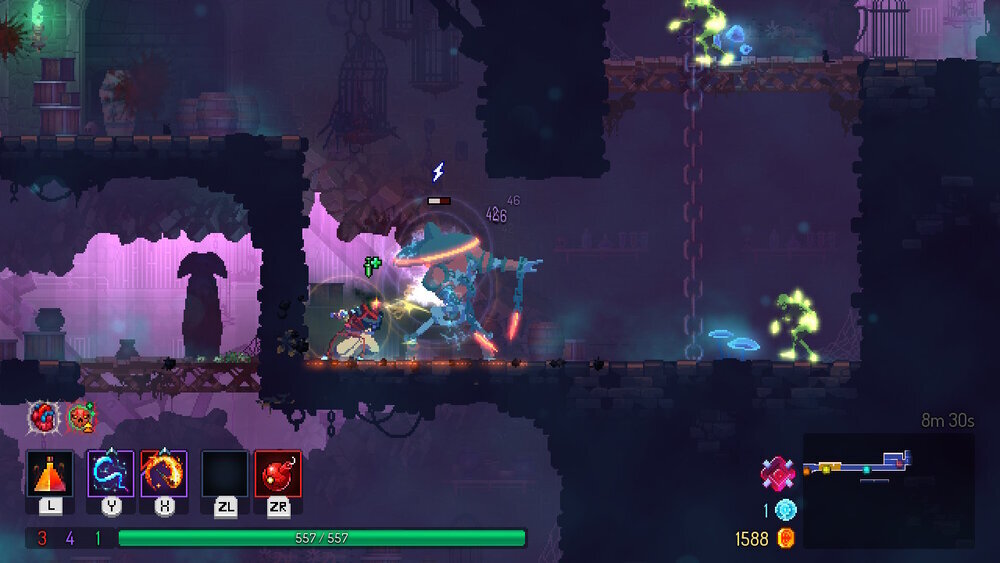Dead Cells (Nintendo Switch) Review
I knew shortly after the release of Dead Cells that the game was an instant classic but for whatever reason I could not find the time to sit down and play it. Maybe I considered it to be too hard or I did not want another system-rich rogue-like to master after I had already spent so much time with games like Exit the Gungeon, Enter the Gungeon, and The Binding of Isaac. I wish I had played Dead Cells sooner because it is one of the most rewarding action games of this generation and I think about it in the same stretch as games like DOOM Eternal. Dead Cells is defined by its visceral combat with a movement system that flows and reacts to the player, all with excellent feedback design.
Games have always excelled at capturing what it feels like to perform specific actions. Mario’s jump was simple but layered with subtle mechanics that allowed for greater control such as gaining more height with a longer press. Mega Man X allowed players to string together dashes with various shot types. DOOM had players considering enemy types, their ammo amounts, and the properties of the available weapons since the beginning and mastery of action has only gotten better in the latest entries of the franchise. Dead Cells offers a variety of actions and weapons that flows incredibly well together and rewards players for continual practice and mastery while constantly challenging players with tougher and tougher runs.
Dead Cells, a 2D action platformer with rooms and biomes that are randomly generated, starts simply with only a few weapons available. As more enemies are eliminated, bosses are taken down, and secrets uncovered, blueprints are unlocked which can be added to the game’s rotation once purchased with cells. Cells are dropped by most enemies or found in caches and are the most important currency when it comes to expanding the options that drop during play. Skilled players may find themselves able to beat a boss or two on the first attempt but most will find success through repeated trials. In just a few hours, I found myself zipping and slamming around the map, quickly appraising rooms of enemies and making plans of attack in mere moments.
To say that Dead Cells is satisfying to learn is an understatement and it feels like there is still so much more for me to discover after more than forty hours.
Depending on one’s playstyle, there is a wide set of mechanics to engage with. Weapons typically fall into melee, ranged, and shield categories but there are variances within that to keep things interesting. Every weapon amazingly feels unique and each skill such as a grenade or trap also feels unique. Encouraging speedruns, there are doors at the end of each stage that close after an amount of time has passed, rewarding players with a stack of cells and a choice of a powerful item. Similarly, some doors can be opened after killing so many enemies without taking damage. Getting both doors is a moment of triumph akin to beating some of the toughest gaming challenges, even though it is bound to happen eventually. Those that like to take their time and explore can find more power-ups and items that will assist in later levels or allow for more options to buy.
What I like most about Dead Cells is the game steadily gives the player more control. Systems are steadily unlocked that start a run with more gold to buy items at a shop and eventually one can unlock with whole kits that can be picked from. Between being able to adjust the randomized elements to get another roll at shops and knowing when to go for a speedrun door makes the game more manageable. In fact, speedrunning the game is all about using pattern recognition to lower the chance of certain outcomes. Henpaku, one of the top runners of the game, talked about this in detail in our podcast interview with him.
Visually, Dead Cells pulls off a 2D sprite-style but is actually more akin to the low-poly style that is steadily growing in popularity. With more animation fidelity available, characters are expressive, even though they lack facial features. Most of these beings and creatures are knights or disfigured monsters and even the hero character manages to pull off humor despite the fact that it’s a headless homunculus birthed by twisted alchemy. Actually having just a touch of humor in the game makes it that more engaging and fun. There are even references to other games to be found like Gordon Freeman’s iconic suit and crowbar.
There’s not much of a narrative to Dead Cells, at least at first, but as more and more small rooms of lore are found and the pieces start aligning there’s a story here that is compelling and interesting. Highlights of this story are a virus tearing through a city, a king corrupted by his own mortality, and the pursuit of knowledge to make a better environment no matter the cost. Looking even deeper we start to find time loops and the hero’s reasoning for wanting to assassinate the king. Due to the game’s exponential difficulty with each Boss Cell, I probably won’t see the true ending outside of watching an online upload but the simple act of looking for something new or pushing to unlock another item kept me playing for many hours.
Adding to the quality of Dead Cells is this air of mystery brought to the music. Each biome has various tracks that are all memorable, many featuring some truly amazing guitar work. Climbing the Clock Tower as the music becomes more triumphant is something that I think most players will feel that telltale swell in one’s chest. It’s magical.
Unfortunately, the bosses are where I think Dead Cells loses focus. The very best moments of this game involve blazing through levels, sizing up threats, and acting upon that information. Bosses are an antithesis to this, usually involving just hoping that there’s enough damage output to whittle away at a creature that has several periods of invulnerability. Sometimes these encounters entirely feel like they are based more on luck than skill, especially when facing later bosses that have attacks that are hard to avoid.
Unlike games like Enter the Gungeon, where bosses appear out of a pool of several, Dead Cells has a predictable set of bosses that can be prepared for and their patterns can be learned far more easily because of that repetition. Due to this and how that ties into the game’s themes of becoming the ultimate weapon, I feel better about the bosses after learning to take them down consistently. However, I still think that they are the weaker component of a tremendously good action platformer.
I also may have to stop playing these faster-paced games on the Nintendo Switch. Much like my technical issues with Blasphemous, Dead Cells (I own a physical cartridge) is plagued with slight slowdowns and hangups on the Switch as the game loads in new areas. This means that inevitably the game will have an issue in the middle of combat which can be frustrating, especially if it’s the origin of a death. I’ve missed jumps, mistimed rolls, and just generally felt like my performance was hindered by playing on the Switch. I also don’t think I would’ve had as good of a time as I did with the Joy-Cons because I exclusively have been using the Hori Split Pad Pro. That control setup is one of my favorite ways to play on the Switch and it definitely helped me become a better player more quickly.
Dead Cells seems to be doing well for developers Motion Twin, who continue to put out new content and patches. When I talked to a few of their team members briefly at a convention, they said that they will continue supporting the game as long as people are playing it. That said, I can’t help but imagine what a sequel could look like or a whole new project.
Those who have yet to play Dead Cells really should consider picking it up. The amount of possibilities and the feeling of steadily becoming a more effective assassin makes it one of the most rewarding action games of this generation and it’s a phenomenal achievement for the studio. Even years after the initial release, even after games are starting to cite Dead Cells as their main inspiration, this game is surprisingly good.
SCORES
GAMEPLAY - 9/10
VISUALS - 9/10
SOUND - 9/10
CONTROLS - 10/10
REPLAY VALUE - 10/10
OVERALL - 9.4/10
More information about Dead Cells can be found on the official website. A physical Switch copy was purchased by the reviewer. Screenshots captured via the Switch.







On a path that will ultimately result in his own destruction, James Savage takes on his vampiric ex-girlfriend Draculae in El Paso Elsewhere, a moody neo-noir action shooter from Strange Scaffold.